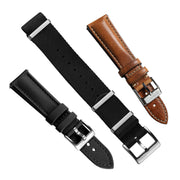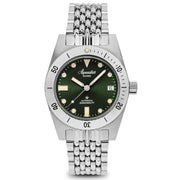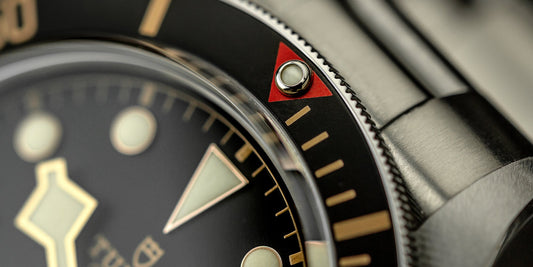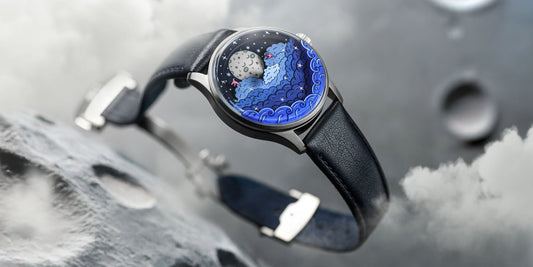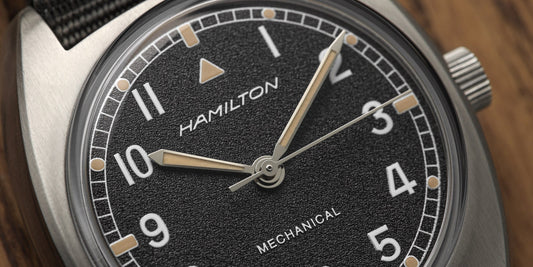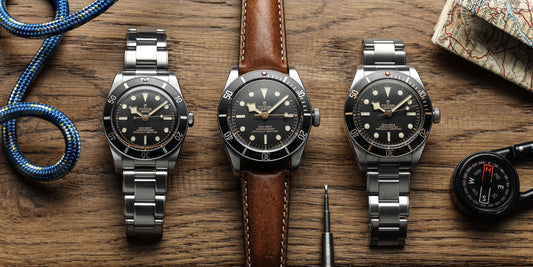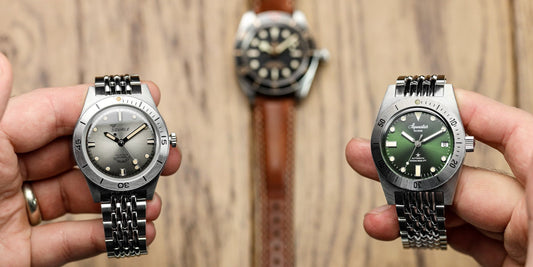The Tudor Black Bay is one of the most successful and influential watch lines in modern history. Its blend of vintage-inspired design, rugged dive watch heritage, and high-end specifications has made it a favourite among enthusiasts. It also played a key role in the vintage reissue craze that continues to shape the watch industry today. However, with a price tag approaching £4,000, the Black Bay is not within everyone's reach. Thank goodness then, that there are some worthy Tudor alternatives.

Fortunately, there are some excellent alternatives that capture the spirit of a vintage-inspired tool watch without the hefty price tag. Two such options come from brands with serious dive watch pedigree—Squale and Aquastar. The Squale Super Squale and Aquastar Model 60 both offer compelling alternatives, blending heritage, specifications, and affordability. But how do they stack up against each other? Let’s take a closer look.
Is Squale or Aquastar a better Tudor Black Bay Alternative?
Specifications: A Close Fight

For many buyers, specifications play a crucial role in deciding between watches, and in this case, it’s a tight contest.
The Squale Super Squale has a 38mm case diameter, a 45mm lug-to-lug measurement, and a thickness of 12mm. With a lug width of 18mm, it has slightly slimmer proportions than many modern dive watches, but this fits well with its vintage-inspired aesthetic. It offers 200m of water resistance, a double-domed sapphire crystal with AR coating, and a choice of matte black, matte blue, sunburst brown, sunburst black, and grey dials.
Another interesting aspect of the Super Squale is its bezel. Depending on the colourway, you can choose between an aluminium or steel bezel insert, both featuring a 120-click unidirectional mechanism. Inside, the watch is powered by the Sellita SW200-1 (elaboré grade), a reliable 4Hz automatic movement.
On the other hand, the Aquastar Model 60 comes in slightly smaller at 37mm but with a slightly longer 47mm lug-to-lug measurement and a thinner 11mm case height. These minor size differences result in a similar wearing experience to the Squale.
Like its competitor, the Aquastar offers 200m of water resistance, a domed sapphire crystal with AR coating, and a range of dial colors—green, blue, and black (all in sunburst finishes). What sets it apart is its 120-click bidirectional bezel, a less common feature that may appeal to some collectors.
Another key distinction is the movement. The Aquastar Model 60 uses the La Joux-Perret G100, a higher-spec alternative to the Sellita. With a longer power reserve and smoother winding action, this movement is a major selling point for those looking for an upgrade in mechanical performance.
Design and Aesthetics
Both watches follow the classic skin diver design—a style that emerged in the 1950s and 1960s as a slimmer, more streamlined alternative to the bulky dive watches of the era. Their cases, bezels, and dials reflect this heritage while incorporating modern upgrades.
The Squale Super Squale keeps things simple with a no-date dial and classic hand design, reinforcing its vintage appeal. The Aquastar Model 60, on the other hand, features a date at 3 o’clock. While some purists prefer a no-date dial, the execution here is subtle and well-integrated.
One area where personal preference plays a role is the hands. The Squale’s handset has a more traditional, well-balanced look, while the Aquastar features a distinctive cut-off hour hand, which might divide opinions. Ideally, a combination of the Squale’s hands with the Aquastar’s dial would make for the perfect design.
Both watches have excellent dial finishing and colour options, ensuring there’s something for every taste.
Bracelet Quality: Squale Takes the Lead
When it comes to bracelets, the Squale Super Squale is the winner. Its bracelet features female end links for a better fit, a refined taper, and a functional diver’s extension. These small details make a big difference in daily wear, providing both comfort and practicality.
The Aquastar Model 60’s bracelet is solid but more basic. With male end links and no diver’s extension, it feels slightly less refined compared to the Squale. That said, some may argue that a diver’s extension is unnecessary for most wearers today.
One feature missing from both watches is on-the-fly micro-adjustment—a feature that has become increasingly common in modern bracelets. While not a deal-breaker, it would have been a nice addition, especially for those who frequently adjust their bracelets throughout the day.
Verdict: Which One is the Better Buy?

Both the Squale Super Squale and the Aquastar Model 60 offer fantastic value for money, especially when compared to more expensive alternatives like the Tudor Black Bay. Both brands have genuine history in the dive watch world, and both watches deliver strong specifications, vintage aesthetics, and solid build quality.
However, if choosing between the two, the Aquastar Model 60 edges ahead slightly. The La Joux-Perret movement offers superior performance, and its bidirectional bezel and unique design elements give it a distinctive identity.
If it were my money, I’d probably stretch for the extra cost and go with the Aquastar. I’ve spent about a month with both of these watches, and I find myself reaching for the Aquastar more often than the Squale. I’ve also been wearing it on the free nylon strap that comes with it, which adds extra value and changes up the watch's look.
That said, the Squale Super Squale is still an excellent choice, especially for those who prefer a classic, no-nonsense vintage dive watch with a better bracelet. It also comes in at a slightly lower price point, making it the more budget-friendly option.
Ultimately, the choice between these two watches will come down to personal preference. Whether you prioritise movement quality, design, or bracelet comfort, both options provide a fantastic skin diver experience at a fraction of the cost of a Tudor Black Bay.
So, what’s your favourite skin diver? And what do you think is the best alternative to bigger models like the Tudor Black Bay? Let us know in the comments below!










